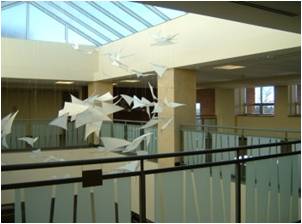Federal Requirements
Laws
Energy Independence and Security Act (EISA)
The stated purpose of the act is "to move the United States toward greater energy independence and security, to increase the production of clean renewable fuels, to protect consumers, to increase the efficiency of products, buildings, and vehicles, to promote research on and deploy greenhouse gas capture and storage options, and to improve the energy performance of the Federal Government, and for other purposes." Search for excerpts![]() relevant to Federal buildings at DOE or view full text at GPO.gov
relevant to Federal buildings at DOE or view full text at GPO.gov![]() .
.
Energy Policy Act of 2005 (EPAct 2005)
The Energy Policy Act of 2005 established a number of energy management goals for Federal facilities and fleets. Many of the energy management requirements of EPAct have been updated in EISA and subsequent Executive Orders. Search for excerpts![]() relevant to Federal buildings or view full text
relevant to Federal buildings or view full text![]() at DOE.
at DOE.
Energy Policy Act of 1992 (EPAct 1992)
The Energy Policy Act of 1992 established several energy management goals, as well as requirements for water and fleet fuel management. Many of the energy management requirements have been updated in EISA, EPAct 2005 and subsequent Executive Orders, but requirements for low-flow water fixtures and alternative fuel vehicles still apply. Search for excerpts![]() relevant to Federal buildings at DOE or view full text at GPO.gov
relevant to Federal buildings at DOE or view full text at GPO.gov![]()
Executive Orders
None available at this time
Guiding Principles
None available at this time
Regulations
Energy Efficiency Standard for Federal Buildings
Federal Energy Management and Planning
10 CFR Part 436 establishes the rules and objectives for Federal energy management and planning programs to promote life cycle cost effective investments in building energy systems, building water systems and energy and water conservation measures for Federal buildings. View Rule![]()
Federal Acquisition Regulation (FAR)
The Federal Acquisition Regulation governs how all government agencies are to make procurements. Specifically, Subchapter D Part 23 dictates how the sustainability aspect of those purchases must be made. FAR - Part 23![]()

